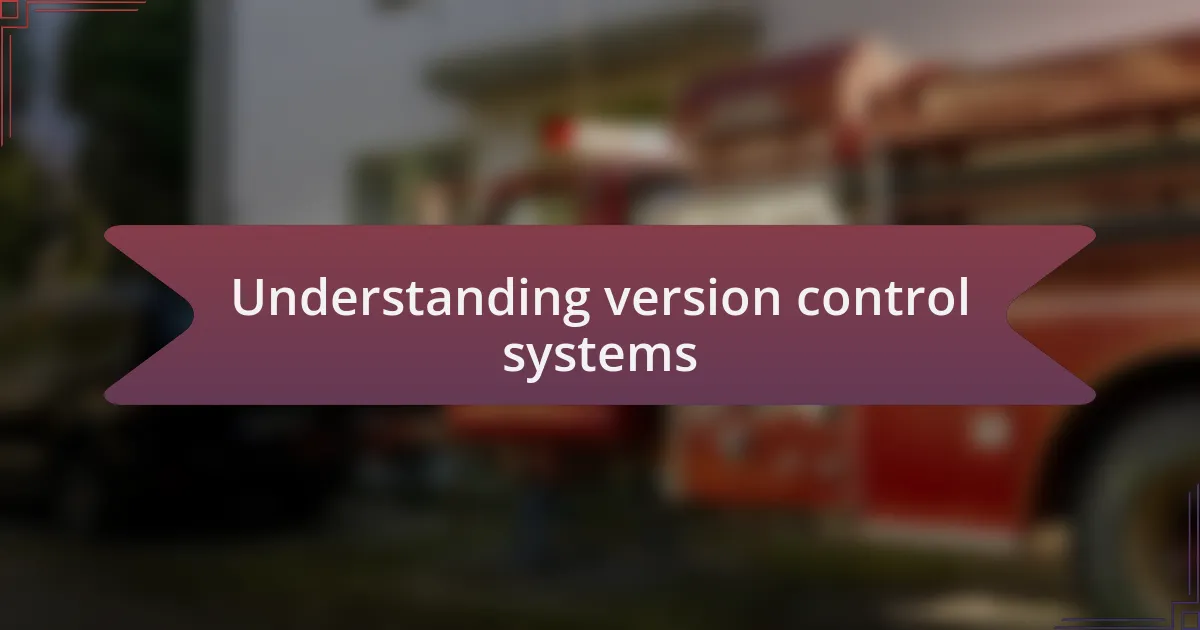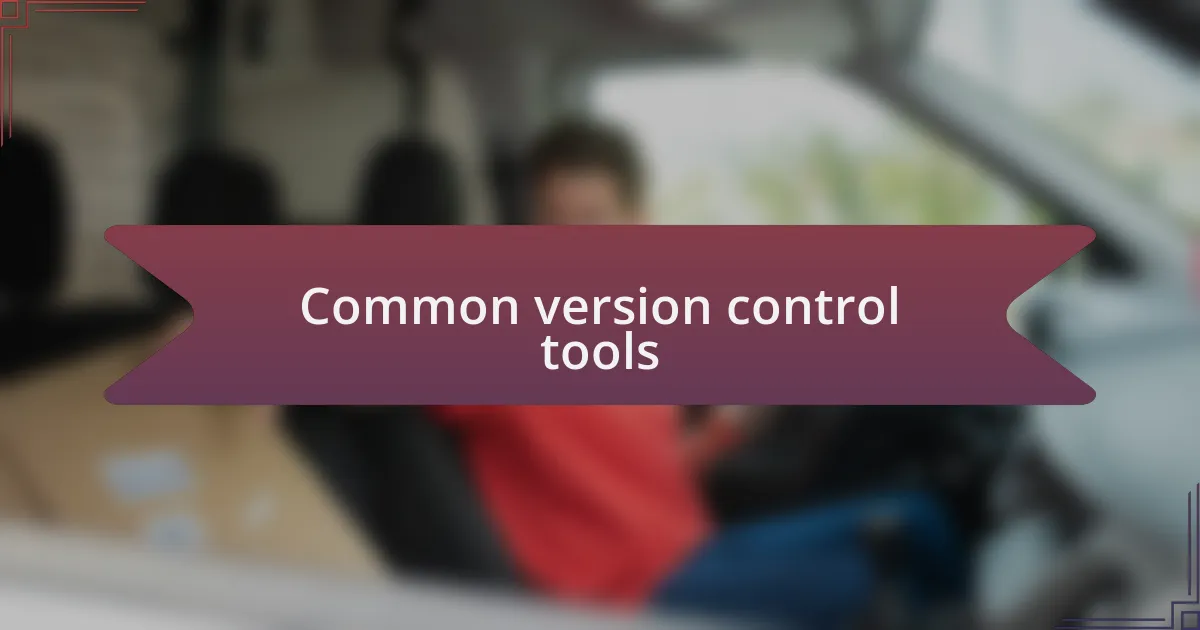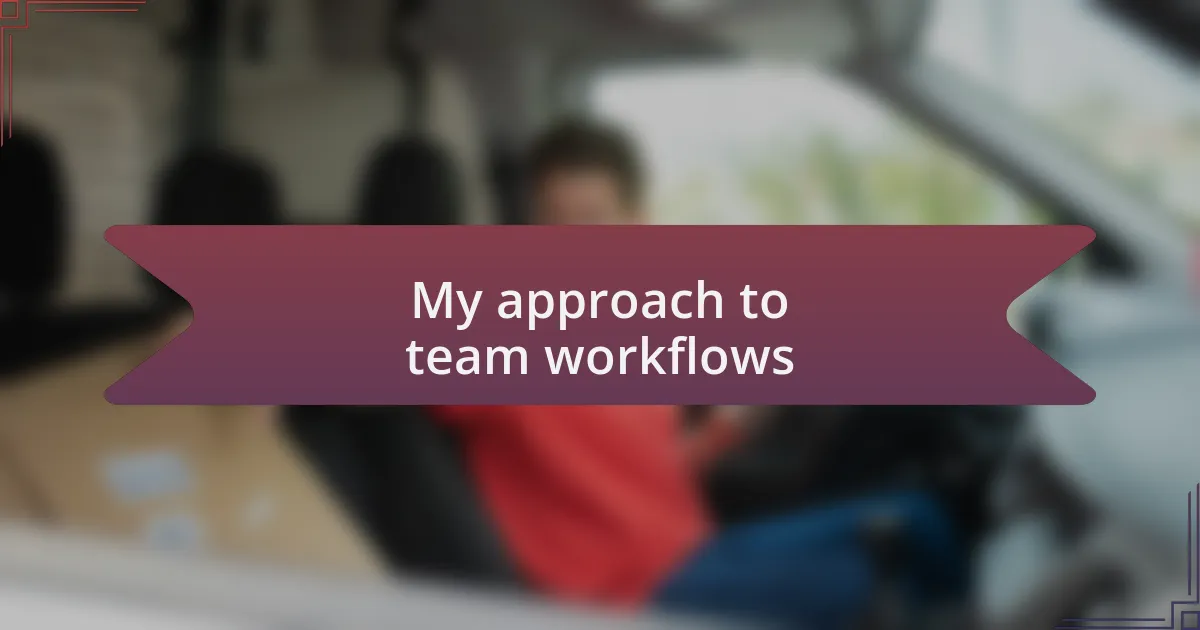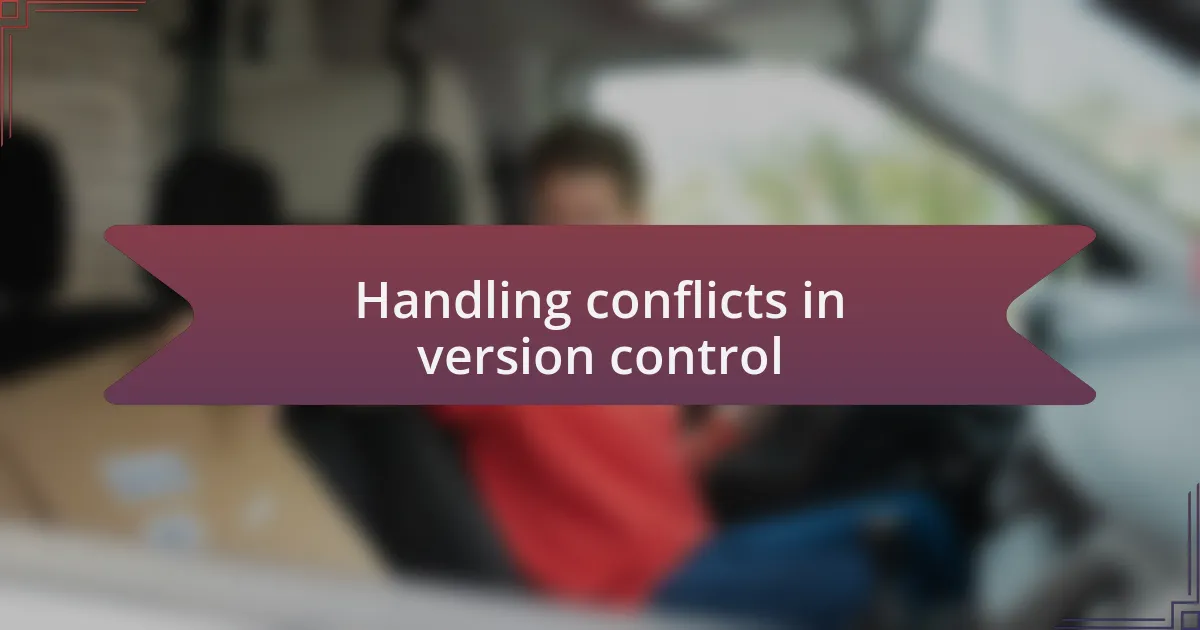Key takeaways:
- Version control systems (VCS) are crucial for tracking code changes and enhancing collaboration among developers, utilizing features like branching and merging.
- Establishing a clear workflow, such as a defined branching strategy and regular stand-ups, is vital for effective team collaboration and minimizing integration issues.
- Effective communication is essential for resolving conflicts in version control, and reflecting on these conflicts helps improve team processes and foster a culture of continuous improvement.
- Fostering trust and clear responsibilities through regular check-ins and shared goals enhances collaboration and reduces frustration within teams.

Understanding version control systems
Version control systems (VCS) are essential tools that help teams manage changes to their code over time. I remember the early days of my development career when we had to keep track of file versions manually. It was chaotic! With a VCS, I experienced a newfound sense of order, allowing us to collaborate more effectively and avoid the dreaded “What version is this?” dilemma.
Understanding VCS means realizing its core purpose: to track changes and facilitate collaboration among developers. Have you ever wondered how projects can grow so seamlessly even with multiple contributors? That’s the magic of branching and merging. In my experience, these features not only help in maintaining a clean codebase but also foster creativity, allowing team members to experiment without the fear of breaking something.
Additionally, version control systems offer a historical perspective on project development. One time, I needed to revert to an earlier version of our software after a significant bug introduction, and that history saved us hours of headaches. This capability to look back in time is invaluable—not just for fixing issues, but for understanding how our project evolved, which can inform future decisions. Isn’t it fascinating how a simple command can unlock a treasure trove of insights?

Common version control tools
Common version control tools typically include Git, Subversion (SVN), and Mercurial. Personally, I’ve found Git to be a game-changer in my workflow; its distributed nature empowers every developer to have a complete history of code changes locally. It feels liberating to experiment without worrying about breaking the main project, doesn’t it?
Subversion still has a solid place in many teams, especially those that prefer a centralized approach. I recall a project where SVN helped maintain strict control over versioning, ensuring that all team members were on the same page. This method can offer a sense of security, but it sometimes lacks the flexibility that a dynamic team might need when creativity strikes.
Mercurial, while not as widely adopted as Git, has its dedicated followers. I once collaborated with a team using Mercurial, and I appreciated its simplicity and straightforward commands. It felt refreshing to navigate a version control tool that didn’t overwhelm with options. Have you ever felt that way about a tool? Sometimes, the simplest solutions can be the most effective for fostering collaboration and productivity.

My approach to team workflows
In my experience, establishing a clear workflow is essential for a smooth team collaboration. I advocate for a well-defined branching strategy, like Git Flow, which allows each team member to work on features in their own branches while keeping the main branch stable. I remember one project where we implemented this strategy; it really minimized integration headaches and fostered a sense of ownership among team members.
Regular stand-ups have become a vital part of my approach to workflows. These quick check-ins help us synchronize our efforts and address bottlenecks promptly. I always find it interesting how a simple 15-minute meeting can transform the trajectory of a project. Have you noticed how a shared understanding can invigorate a team’s spirit?
I also believe in leveraging code reviews as a part of our workflow. They not only improve code quality but also serve as learning opportunities. I vividly recall a time when a code review led to a breakthrough on a challenging problem. It’s moments like these that remind me how collaboration and feedback can elevate a project beyond individual contributions.

Handling conflicts in version control
When dealing with conflicts in version control, I’ve found that communication is paramount. There was a project where two team members accidentally made conflicting changes to the same file. Instead of scrambling to fix the issue, we held a quick discussion to understand each other’s perspectives, which led to a more robust solution than either of us had initially envisioned. Isn’t it fascinating how conflict can actually spark creative problem-solving?
Resolving conflicts isn’t just about merging code; it often involves recalibrating expectations within the team. In another instance, I faced a situation where multiple features were being developed simultaneously, leading to significant merge conflicts. I realized that establishing clearer guidelines for who was responsible for which code sections might have prevented this. This experience taught me the importance of proactive planning—do we sometimes underestimate the power of foresight?
After conflicts arise, I always emphasize taking time for reflection as a team. When we resolve an issue, I encourage us to discuss what led to the conflict in the first place. Reflecting on these moments not only helps to refine our processes but reinforces a culture of openness and continuous improvement within the team. How often do we take the time to learn from our challenges? From my perspective, it can make all the difference.

Tips for effective collaboration
Effective collaboration hinges on clear communication, which I’ve learned can make or break a project. For example, in one team I worked with, we scheduled regular check-ins. These meetings provided a space not just for updates but also for sharing concerns, which ultimately fostered trust and camaraderie. Have you ever noticed how simply talking through issues makes them less daunting?
Another key element is the establishment of shared goals and responsibilities. I remember a challenging sprint where roles were unclear, resulting in overlapping efforts. By creating a shared document outlining each member’s tasks, we streamlined our workflow and reduced frustration. This shift led to a more harmonious working environment. How much smoother would your projects run if everyone knew their specific contributions?
Lastly, I advocate for embracing feedback as an engine for growth. In past projects, I encouraged my team to give each other constructive criticism openly. At first, it felt uncomfortable, but over time, we saw how this practice led to significant improvements in our output. After all, isn’t it true that honest feedback is a cornerstone of team development?